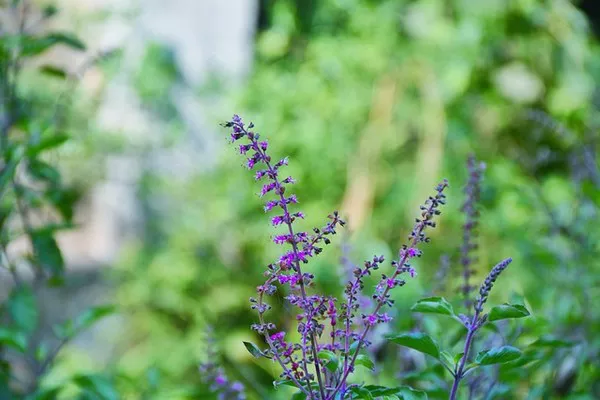Basil, scientifically known as Ocimum basilicum, is a herb renowned for its aromatic leaves and culinary versatility. Whether you’re an experienced gardener or a novice looking to explore the joys of herb cultivation, growing basil is a rewarding endeavor. This article delves into the fascinating world of basil plants, covering everything from their origin and preferred growing conditions to the various stages of growth and essential care tips.
Origin and Varieties
Basil is believed to have originated in the tropical regions of Asia, particularly in India, where it has been cultivated for thousands of years. This fragrant herb has found its way into the cuisines of many cultures around the world, with each region cultivating its unique varieties of basil.
Some popular basil varieties include:
Sweet Basil (Ocimum basilicum): This is the most common basil variety, prized for its mild, sweet flavor. It is the classic choice for Italian dishes like pesto and caprese salad.
Thai Basil (Ocimum basilicum var. thyrsiflorum): Recognized for its anise-like flavor and purple stems, Thai basil is a staple in Southeast Asian cuisine, particularly in dishes like Thai green curry and Pad Krapow.
Genovese Basil (Ocimum basilicum ‘Genovese’): Often considered the premier basil for making traditional pesto, Genovese basil is a favorite among herb enthusiasts due to its strong aroma and bold flavor.
Lemon Basil (Ocimum basilicum ‘Citriodorum’): As the name suggests, lemon basil has a citrusy aroma and taste, making it an excellent addition to seafood dishes and salads.
Now, let’s explore the key factors involved in the growth of basil plants.
Preferred Growing Conditions
Basil is a warm-weather herb that thrives in specific growing conditions. To ensure a bountiful harvest, you must provide the ideal environment for your basil plants:
Sunlight: Basil loves sunlight and thrives in full sun, receiving at least 6 to 8 hours of direct sunlight daily. If you’re growing basil indoors, place it near a south-facing window or provide supplemental light using grow lights.
Soil: Well-draining soil is essential for basil plants. A loamy or sandy soil mix with good aeration will prevent waterlogged roots and promote healthy growth. A pH level of 6.0 to 7.0 is ideal for basil.
Temperature: Basil prefers warm temperatures between 70°F to 90°F (21°C to 32°C). Avoid exposing basil to frost, as it is highly sensitive to cold.
Watering: Basil requires consistent moisture but does not tolerate soggy soil. Water the plants when the top inch of soil feels dry. Be cautious not to overwater, as this can lead to root rot.
Container Size: If you’re growing basil in pots, choose containers with adequate drainage and a minimum size of 6 inches in diameter per plant. This allows the roots to spread comfortably.
The Stages of Basil Growth
Understanding the growth stages of basil is crucial for successful cultivation. Basil goes through several key phases:
Germination (5-10 days): Basil seeds can be started indoors 6-8 weeks before the last expected frost date. Sow the seeds 1/4 inch deep in seed-starting mix, keep them moist, and provide gentle warmth. Once the seedlings have two true leaves, they can be transplanted.
Seedling Stage (2-4 weeks): Basil seedlings are delicate and require protection from harsh environmental conditions. Ensure they receive ample sunlight or artificial light and maintain consistent moisture.
Vegetative Growth (6-8 weeks): During this phase, basil plants develop their distinctive leaves and grow rapidly. Pinch or prune the tips of the branches regularly to encourage bushy growth and prevent the plant from flowering prematurely.
Flowering Stage (8-12 weeks): As basil plants mature, they may start to produce flower spikes. While the flowers are attractive, they signal the end of the plant’s leafy growth phase. To prolong the harvest of basil leaves, promptly pinch off the flower buds as they appear.
Essential Care Tips
To maximize the growth and flavor of your basil plants, follow these essential care tips:
Fertilization: Basil benefits from regular feeding. Use a balanced, water-soluble fertilizer every 2-3 weeks during the growing season, following the manufacturer’s instructions.
Mulching: Apply a layer of organic mulch, such as straw or compost, around the base of your basil plants. Mulch helps retain soil moisture, suppress weeds, and regulate soil temperature.
Pest and Disease Management: Keep an eye out for common basil pests like aphids, whiteflies, and spider mites. Insecticidal soap or neem oil can be used to control infestations. Additionally, basil is susceptible to fungal diseases, so ensure good air circulation and avoid overhead watering.
Harvesting: Harvest basil leaves regularly by pinching or cutting the stems just above a set of leaves. This encourages the plant to produce more foliage and prevents it from flowering too soon. The best time to harvest is in the morning when the oils are most concentrated.
Preservation: To extend the shelf life of harvested basil leaves, avoid washing them until use. Store them in airtight containers in the refrigerator or freeze them in ice cube trays with a bit of water for later use.
Conclusion
Growing basil plants is a gratifying experience that can enhance your culinary endeavors and add a touch of freshness to your dishes. By providing the right growing conditions, understanding the stages of basil growth, and following essential care tips, you can cultivate robust and flavorful basil plants that will thrive season after season. Whether you’re garnishing a pasta dish, brewing a refreshing tea, or crafting a homemade pesto sauce, homegrown basil will elevate your culinary creations to new heights.


